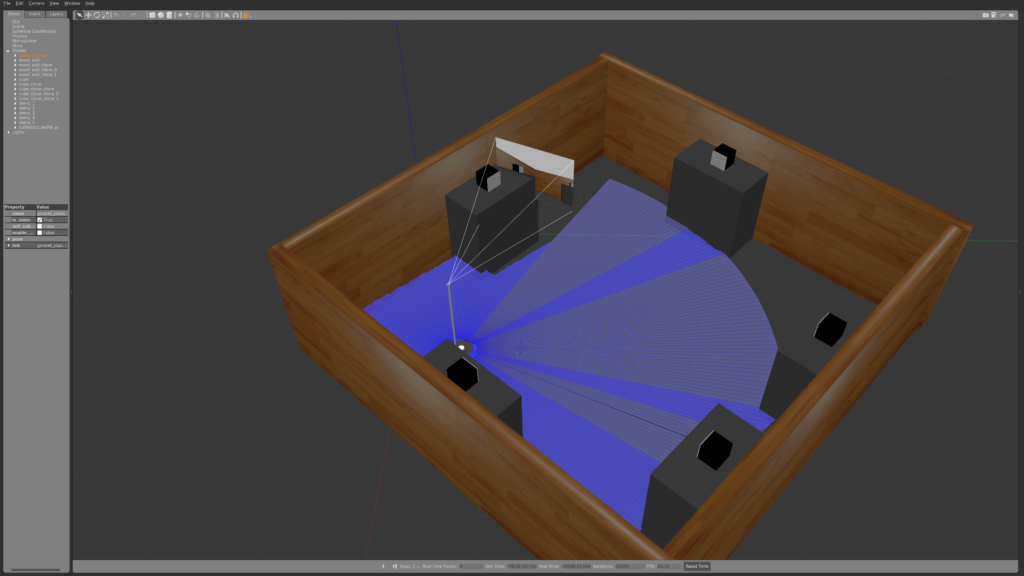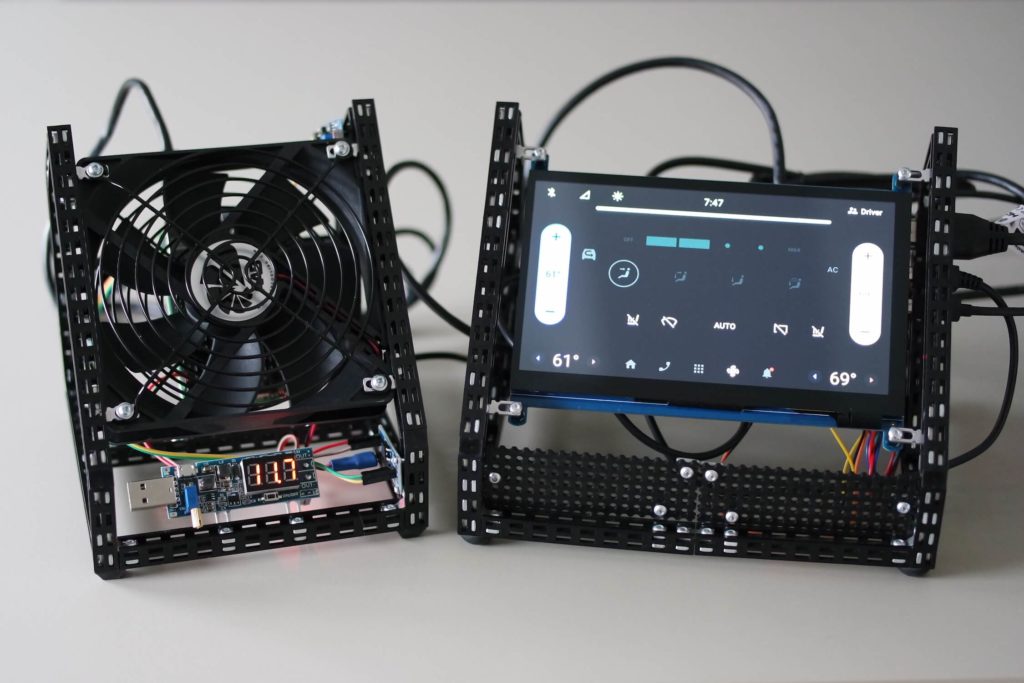Commercial drones: trends, challenges, solutions. An interview with Marieta Weglicka and Piotr Wierzba
In the evolving world of technology, drones are quickly advancing beyond the realms of hobbies and entertainment. While they may conjure images of futuristic skies filled with buzzing machines, the current use cases are far-reaching and transformative. In this article, we engage in insightful discussions with industry experts from Spyrosoft Synergy: Piotr Wierzba, Co-Founder, Co-CEO and Robotics BU Director, and Marieta Weglicka, Co-Founder and CTO.
Together, we explore the drone market, delve into emerging trends, and reflect on recent advancements. Join us as we explore the capability of drones, from cargo transportation to their pivotal role in emergency scenarios. We also explain the challenges and solutions propelling the industry forward.
What are drones?
Marieta Weglicka: Drones are often associated with children’s toys or hobbyist devices for racing or taking bird’s eye view photos. But there’s also another, rapidly evolving market – commercial drones, the ones we develop. In general, drones in this context are unmanned flying devices that assist in executing simple yet hard-to-reach tasks for humans. Whether it’s land inspection, area monitoring, assistance in carrying out work at height, or object transportation. For instance, we’re currently in talks with a company creating cargo drones, and they also have plans for human transport.
Cargo drones and autonomous air taxis? That sounds like sci-fi.
Marieta Weglicka: These are plans for the next 5-10 years. But there are companies already establishing consortia and creating these cargo drones, and they’re also considering human transport in the long run. There are already commercial drones that can carry over 200 kg, and they are used, for instance, to transport parts between factories. However, when they will be introduced for general use depends on legal regulations.
Piotr Wierzba: But, of course, drones are not limited to carrying heavy goods. There are flying devices used, for example, when climbers get stuck in mountains. Such a drone can bring provisions and other necessities so they can get through the night until a rescue team arrives. Drones also deliver medicine or blood to battlefields or places hard to reach by traditional transport. Shipping can also take place in the city, but here again, we face legislation issues.
What other tasks can commercial drones be used for?
Marieta Weglicka: Drones are becoming an essential component of business processes in various industries. They enter the supply chain and support specific tasks to enhance the service provision process. For example, with our US-based customer, we’re working on a last-mile delivery project where drones transport groceries from the store to the customer. Or intralogistics – where drones with computer vision functionality can conduct inventory in markets or warehouses, relieving staff members of that task. People can focus on more creative or relational work instead of running around with a ladder or, heaven forbid, falling from a height, seeing a physiotherapist and walking on crutches for several weeks.
Piotr Wierzba: Drones are becoming an integral part of our life. Be it for life-saving functionalities, transporting goods for people in need, or site monitoring. Recently, during the Odense Robotics event, we saw inspection drones that patrol coastlines to identify people who may be in trouble in the water. Or drones that check incoming port transports for smuggling.
Marieta Weglicka: Drones are most often used where it’s difficult for humans to get to, due to safety or risk of life loss, or where a perspective from height is needed. Like in agriculture, there are many drones that inspect crops. They fly over fields, check the moisture level, look for parasites or disease outbreaks, spray plants. Drones that look for smoke over forests or help in maintenance works, like removing snow from wind turbines. For me, the most interesting case is the DRONE VOLT company. They provide drones for high-voltage line inspection. Currently, many of those maintenance works are conducted by people in helicopters, and there were incidents that harmed worker’s health. Using drones reduces the risk of injury while maintaining the same work efficiency level.
Piotr Wierzba: Or entertainment. Recently, I was at a concert where the performance was streamed online. Instead of a cameraman running amongst the artists on stage, there was a drone flying, recording the whole gig from many perspectives. I think using commercial drones in more everyday situations minimises the fear of those devices, that they could hurt someone.
However, drones won’t suit every case. Gartner predicts that in the coming years, AMRs will develop faster.
Piotr Wierzba: Yes, there are various business needs. You can choose whether a driving or flying solution fits your case. Let’s take, for example, the previously mentioned inventory in a construction store. Product counting can be done by an autonomous mobile robot with a camera on a boom (like our Avatar), but it can also be done by a drone. Or, for instance, monitoring an airport runway. The drawback of using an AMR in this case is that it stays on the ground. It’s the same when it comes to patrolling coasts or delivering supplies to places with difficult terrain. But, when it comes to indoor spaces, autonomous robots can be better at taking stuff from shelves and moving them from point A to point B or transporting fragile objects, like a glass of water. I think both robotics products will be needed, it’s just a matter of the use case. Drones are better for monitoring or rapid transport because of their speed and agility, while for slow inspection or heavy delivery, AMRs can be better.
What challenges do drone-manufacturing companies face?
Marieta Weglicka: We’ve noticed that meeting safety and compliance regulations is an area of critical importance. We’re talking about ensuring that no one gets hurt by the device. The company producing and programming commercial drones must obtain specific certificates and stick to strict rules, among others, regarding testing. Many companies struggle with complying with these requirements because they lack the experience. Of course, they have large domain knowledge and know their product inside out, but this legal stuff can be new to them, especially for startups that face it for the first time. Also, every country has different regulations. Those companies need support to meet regulatory standards.
I’ve mentioned testing. That’s an issue – where can you safely check the device in action in an area similar to the targeted environment? In Odense, Denmark, they had a great idea of converting an unused airport into a drone testing space. It’s a vast area, many hectares, both on land and over the sea. All tests are coordinated with the flight control system, so there’s no chance of interfering with a plane.
Piotr Wierzba: Many companies we talk with during industry events say that a functional drone is only half the success. They build their products using innovative technology or around a fresh, unique idea, so they don’t want to release any of the know-how outside. Still, they may need support in developing digital products to manage their robots. We are talking here about maintenance, planning, or the remote management of drones. In answer to these needs, we often use cloud solutions, data, AI, and various languages and frameworks to build and integrate HMIs. There’s a trend to use a smartphone or tablet to control a drone when inspecting, for example, wind farms. Using our knowledge of HMI and video streaming, we make functional, efficient products for customers. We help them with development and maintenance, so the client’s employees don’t have to gain proficiency in, for example, cloud services, because we already have the knowledge.
How does Spyrosoft help overcome these challenges?
Marieta Weglicka: Clients come to us when they’ve already developed their drone but struggle with, for example, cloud platforms due to a lack of experience in efficient data handling architecture. Or they build low-level solutions closer to the hardware and want us to create a desktop or mobile application.
Our advantage is that we can handle the entire ecosystem, from safety through cloud, data analysis and AI services to applications or HMI development. Also, as a company with a wide range of business units, we understand the needs of industries such as geospatial, automotive, or healthcare and life sciences.
Piotr Wierzba: We already work with companies developing robotics solutions for mining, healthcare or last-mile delivery. We help them deliver their products to the market faster thanks to our wide technological knowledge as well as the focus on the robotics domain.
We know also how important it is for companies to secure their know-how. Spyrosoft has all the necessary security certificates and documents of compliance meeting the industry standards. No matter the model of cooperation – be it outsourcing, tea extension, or build-operate-transfer – we always put the greatest emphasis on securing the client’s idea and source code.
We also have partnerships and collaborations with robotics organisations.
Piotr Wierzba: That’s right. We are a Silver Member of the Pittsburgh Robotics Network, an organisation that associates with over one hundred companies worldwide in order to encourage collaboration and introduce innovation in the industry. We’ve joined the Odense Robotics cluster and are a regular guest at all industry events held in Denmark. Our cooperation with Staex – a company delivering a platform for robots and drone communication – has translated into a partnership that accelerates our growth as well as theirs. We also partner with Apex.AI, a company with expertise in developing robust software platforms for autonomous vehicles, drones, and robotics. One of our most crucial cooperations is the partnership with The Qt Company. We build human-machine interfaces using their framework, among other applications, for our drone customers. We have Intel, NVIDIA, Amazon Web Services, Microsoft Azure and Google Cloud among our hardware and infrastructure partners.
And we’re launching a drone R&D initiative.
Marieta Weglicka: We’re preparing to start a drone initiative within Dojo, our R&D programme. We’ll build an autonomous landing spot detection system using computer vision and linking ROS with a flight controller PX4. The aim is to present our skills in areas that the market needs most. The real-life use case for the solution could be last-mile delivery, detecting drone charging stations and automatic landings for recharge, or identifying spots where a cargo drone can leave the load or an air taxi can drop off a passenger. Since we’re knowledgeable in computer vision, databases, embedded systems, communication, and cybersecurity, now in Dojo, we combine these areas of expertise and add new ones to develop a workflow allowing drone companies to bring their products to market faster. Thus, we ensure that end users experience the benefits of commercial drones’ presence sooner, not only in their day-to-day activities, but especially those where human life or health is at stake.
To conclude
The evolution of drones is nothing short of remarkable, transitioning from simple playthings to vital tools in numerous industries. As underscored by Spyrosoft experts’ insights, the drone technology landscape is vast and multifaceted. From providing life-saving aid to redefining transport logistics, drones are proving their value in modern society. However, the journey isn’t without its challenges, particularly in the realms of safety and regulatory compliance. Through collaboration, innovation, and a continued commitment to research and development, companies like Spyrosoft are helping to guide the industry into a new era. It’s clear that the drone revolution is not just on the horizon but already here.
If you would like to learn more about the professional robotics services we provide, feel free to explore this page or contact us via the form below.
About the author
Contact us
Transform your industry with the help of Professional Robotics
Our blog




![[bloghero-thumbnail] ros on nvidia jetson board](https://spyro-soft.com/wp-content/uploads/2023/07/bloghero-thumbnail-ros-on-nvidia-jetson-board.jpg)